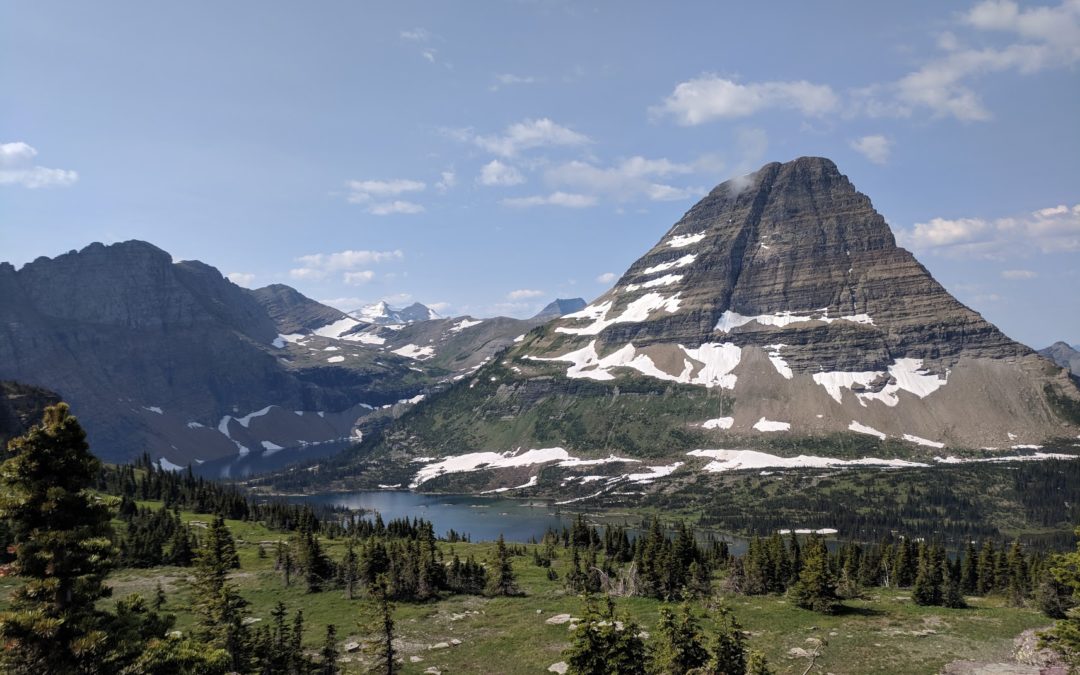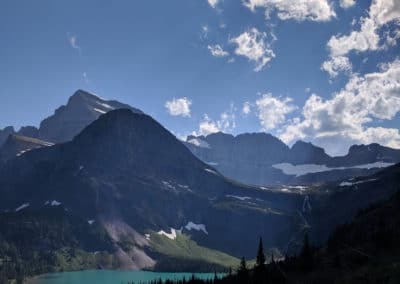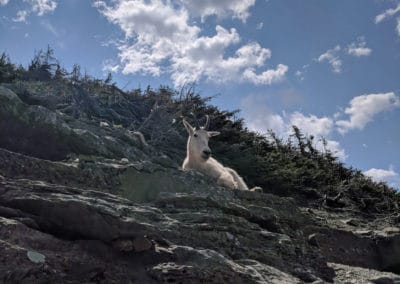I’ll be honest, I’ve never seen a real mountain before in my life. I’m from Georgia where the greatest topography we have is the Appalachian Mountains and The Big Chicken. So, you can imagine the awe on my face as we drove through the Blackfeet Reservation and could see the mountains on the horizon. The ground transitioned almost immediately from flat, farmland to gigantic peaks. It was truly an unbelievable sight.
The idea that kept me awake at night (literally) was how massive these mountains were. It was hard at first to comprehend that these mountains were actually sedimentary rocks. When you look at a mountain face, you’re literally seeing back in time. Each layer represents a unit of time, and the scale of these layers can date by billions of years. Even now, I still can’t picture the massive amount of time it took to layer each rock unit on top of each other. I’d look at a mountain face and stare for minutes trying to wrap my head around it. Still, even after camping in Glacier for two straight weeks, the mountains didn’t look real to me.
One idea that tingles my geologic mind is the crazy things you can do to rocks to make these beautiful landscapes like Glacier National Park. You can form a rock underwater, fracture it, melt the rock, form layer on top, melt it again, then build a mountain out of it. That’s just crazy to me, and Glacier represents one of those special places where a fascinating geologic history occurred. Along lots of the mountains, you can see folds ranging from only inches across to folds along the entire face. You can see fractured layers, amazingly different colors, and even magmatic intrusions (the famous sill!) On top of all that, throw in some glaciers and then you got a beautiful landscape with insane topography, lakes, and huge valleys.
Oh, and let’s not forget about the mountain life. This rocky place is home to diverse and resilient plant and animal life. These mountains are an integral part of the life here. Mountain goats, mountain lions, wolverines, and even moose make this area their habitat. Lodgepole pines, whitebark pine, lichens, and the alien-looking bear grass succeed in the harsh conditions of this terrain. They add color and character to these mountains. All of this life contributes to the already beautiful views of this park.




